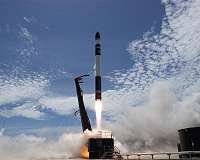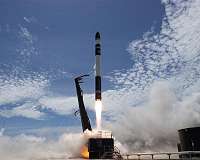A rocket launched five small satellites into orbit such as a Boston University experimentation to measure the Earth’s magnetosphere and winds first Saturday morning, in New Zealand.
California-based Rocket Labs, which possesses the New Zealand launching website about the Mahia Peninsula, lofted the satellites aboard a company Electron rocket in 1:12 a.m. EDT. The launch was delayed slightly using a cumulus cloud over the pad.
The launch had been postponed once in May due to travel constraints amid the outbreak and again due to high winds.
The ANDESITE CubeSat that boston University’s experimentation, consists of satellite the size of a toaster oven that’s carrying eight satellites indoors. They’ll be introduced to produce a system that relays data to the mothership that is small.
The project intends to acquire a better understanding of how the surroundings space near Earth change, stated Joshua Semeter, a professor of engineering at Boston University.
Currents in the atmosphere run during plasma, or matter, created by solar winds, Semeter explained.
“It’s like wires attached into a light bulb,” he explained. “we would like to study the way the current is spread in the cables. That, in turn, will tell us a great deal about the way in which the energy is generated in the distant magnetosphere, a subject which is not well understood.”
Such advice may help predict space weather, including disruptions to Global Positioning Satellite networks and satellite communications, ” he explained.
Sensors on the ground will record conditions where the aurora borealis is not uncommon as the ANDESITE network flies across the northern pole areas.
Since the mission also conveys spy satellites for the U.S. authorities, the company declined to reveal the orbit altitude. The aurora borealis occurs at altitudes of about 75 miles to 110 mph.
Semeter reported then and the ANDESITE mothership originally will orbit 310 miles high fall to about 248 mph before releasing the miniature satellites. .
The mission also carried three payloads for the National Reconnaissance Office, which manages the nation’s spy satellites for intelligence agencies, as well as the M2 Pathfinder communications satellite for the University of New South Wales and the Australian authorities.
Rocket Lab named the mission”Do not Stop Me Now.”
It’s the 12th mission launching of an Electron rocket, which is regarded as a vehicle with about 34,000 pounds of thrust on liftoff. In contrast, SpaceX’s Falcon 9 is capable of 1.7 million pounds of push on liftoff.
The mission does not include testing or advancement because of the continuing efforts of Rocket Lab to produce the first-stage booster reusable.
– Advertisement –


